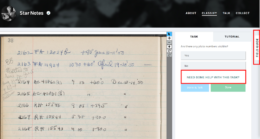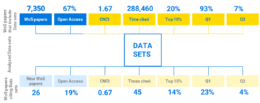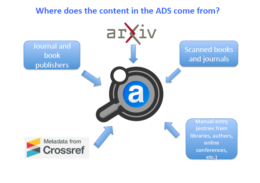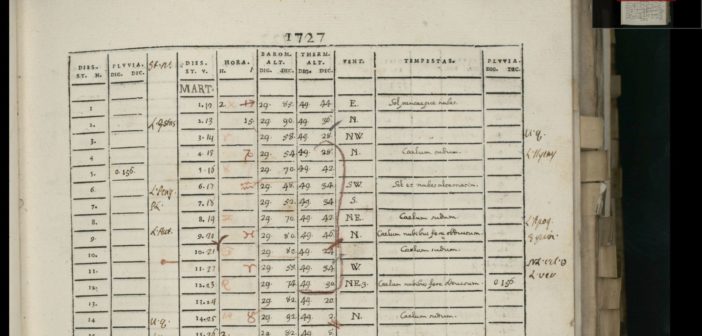As members of the astronomy community, it’s critical for us to be good stewards of historical and modern data, instruments, and records, ensuring that these materials are preserved for the future and made available to those who need them. How can we achieve this goal? This is the topic of the Library and Information Services in Astronomy (LISA) conference series, which brings together an international group of astronomers and librarians.
The idea for LISA conferences came about at a meeting of the International Astronomical Union, at which Brenda Corbin, the librarian at the United States Naval Observatory, proposed the idea of holding an international meeting of astronomy librarians. Six years later, the first LISA conference was held in 1988 in Washington, DC. Though the tools and data products astronomers routinely use have changed since the first conference, the goals remain the same: preserve our astronomical artifacts, be good scientific citizens, and share our work with the world.
LISA IX, hosted virtually by the Royal Astronomical Society in June 2021, tackled six main themes. The 36 articles that made up the proceedings are available in a special collection of the Bulletin of the American Astronomical Society. You can read a brief summary of each article below — and be sure to check out the full articles to learn more!
Astronomical Heritage

A screenshot of the Star Notes interface on the Zooniverse platform. Volunteers can help match notebook entries to photographic plates. Click to enlarge. [Carver et al. 2022]

Desideribus is a play describing the life of Angelo Secchi, and Italian astronomer who was a leader in the field of spectroscopy and among the first to believe that the Sun is a star. Click to enlarge. [Gargano et al. 2022]
Metrics

An example of how including data sets impacts citation rates and other factors. Click to enlarge. [Cortés-Rodríguez et al. 2022]
Open Access
The question of open access considers best practices for sharing the results of astronomical research widely. Antonella Gasperini and collaborators describe the issues they encountered when creating an institutional open-access repository for scientific data at the National Institute of Astrophysics in Italy. Greg Schwarz gives the AAS perspective on the matter of uncurated astronomical data. Daina Bouquin and coauthors detail the pilot study of a science literacy and outreach project that seeks to introduce ground stations capable of communicating with small satellites into public libraries. Nagaraj Mulukunte Narayana and M.K. Bhandi survey researchers in Bengaluru, India, to quantify the usage and impact of the arXiv physics preprint server.
Open Science and Tools, Techniques, and Skills

An example of the App Inventor interface, which does not require any previous coding knowledge. Click to enlarge. [Kaddipujar et al. 2022]
Research Data Management and Software
What’s the best way to handle the mountain of data astronomers generate? How do we manage it, share it, and ensure that the data and software products used in research are given proper credit?

This diagram illustrates where the Astrophysics Data System gets its data. Click to enlarge. [Donna M. Thompson and The ADS Team 2022]
Another prominent issue pertains to the assignment of Digital Object Identifiers (DOIs) to research tools beyond publications, like software and data products. Gilles Landais and collaborators discuss the usage of (DOIs), focusing on their role in the VizieR astronomical catalog service, and Glenda Coetzer and collaborators describe their pilot project to assign DOIs to data products from the South African Radio Astronomy Observatory.
When data and software are made available, are they cited? Daina Bouquin and team perform a case study of how software is — or is not — cited in astronomy, while Gretchen Stahlman shares results of a study on the accessibility of data referenced in published articles. And as our data policies change, institutions must adapt; Mark Allen and team explain the challenges faced by astrophysics and accelerator particle physics facilities regarding meeting open science standards, and Evelyne Son and coauthors report on changes to the Strasbourg astronomical Data Center (CDS) and subsequent changes to the skill sets of the CDS data stewards. Grégory Mantelet and coauthors report on their efforts to convert articles from all scientific publishers to the same format. Francesca Martines and Cristina Knapic give a librarian’s perspective on a complete model for data management at the National Institute for Astrophysics in Italy.
The Future of Librarianship
Where are we headed next? Joy Painter looks to the past and the future by working to preserve historical data from the esteemed Palomar Observatory while engaging with the challenges of managing modern data from the Zwicky Transient Facility. Lydia Fletcher presents lessons learned from managing the University of Texas at Austin J.M. Péridier Library, including a dramatic re-imagining of the physical library space that led to greater accessibility. Hilary Hargis and collaborators report on the importance of making management decisions with a world view and increasing cross-institutional collaboration. And Hemant Kumar Sahu presents an investigation into the usage of electronic materials at the Inter-University Centre for Astronomy and Astrophysics library in Pune, India.
Feeling inspired to share your insights and projects in astronomical librarianship? LISA conferences typically happen every three years, so you have plenty of time to prepare for LISA X! In the meantime, you can read the full proceedings of LISA IX in a special collection of the Bulletin of the American Astronomical Society.

